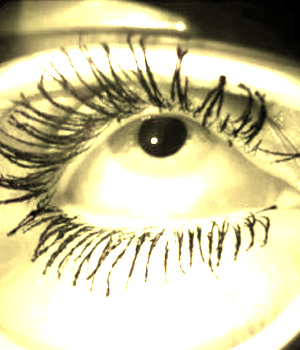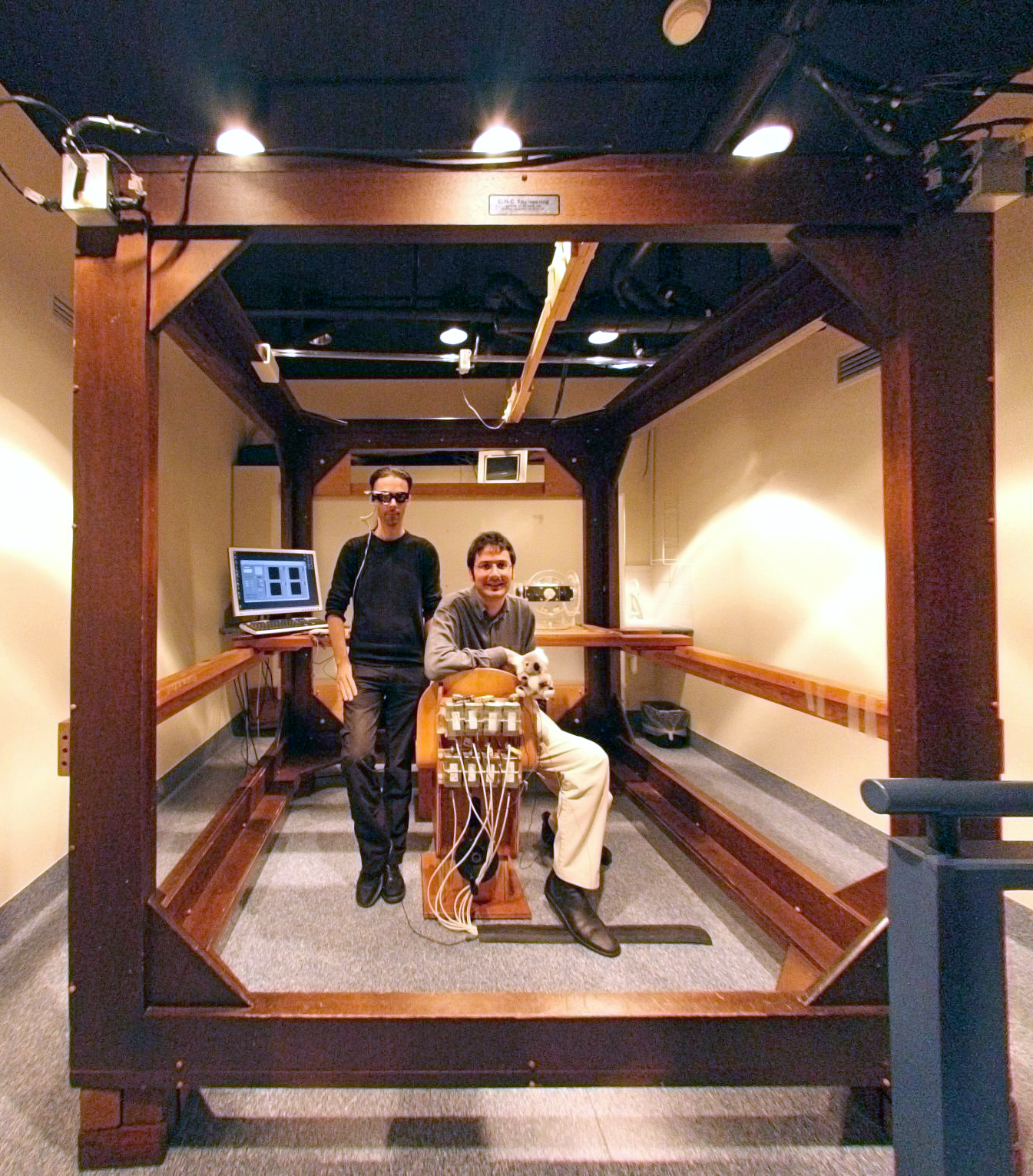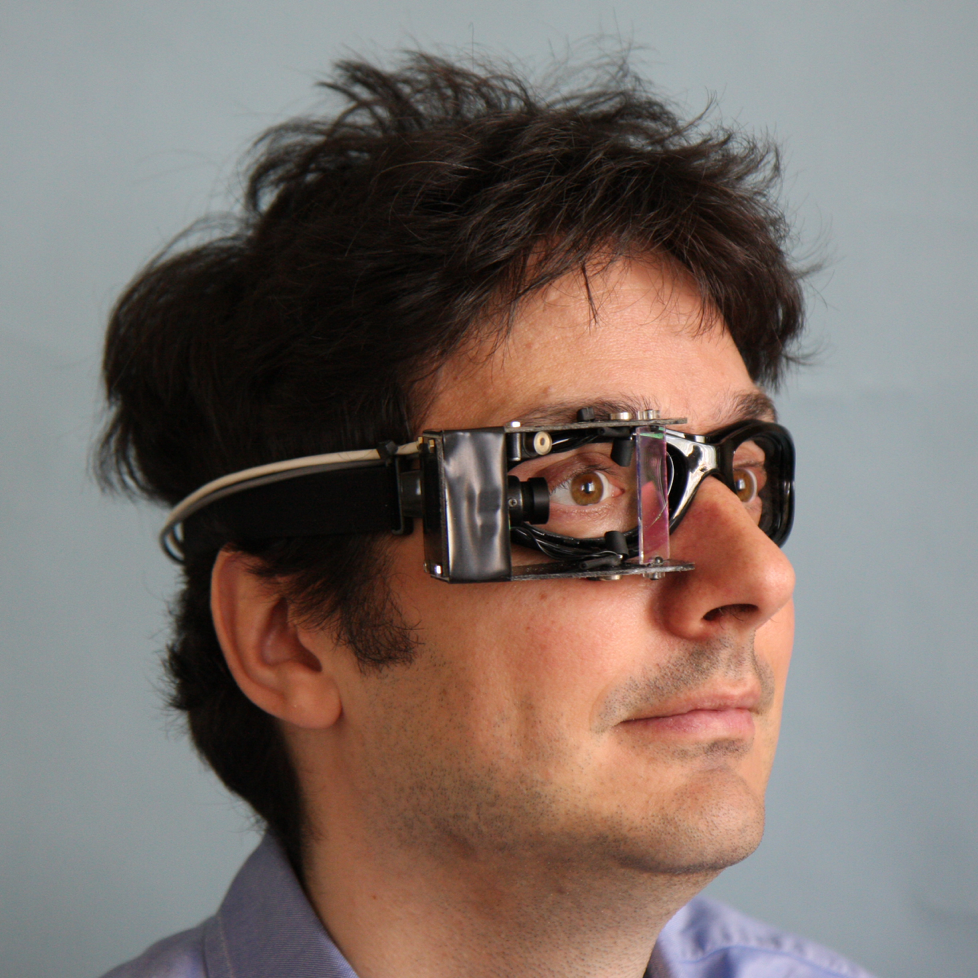Blink
Double Videoloop, 5’14’’, 2018
This video at the interface between science and art was created for the exhibition by the neurologist Konrad Weber and the artist Elisabeth Eberle.
The clip was recorded with infrared video goggles which register eye movements for medical diagnostics. They measure the vestibulo-ocular reflex which is one of the fastest reflexes in the human body. This balance reflex from the inner ear stabilizes the eyes in space during head movements, just like a video camera's image stabilizer. Thus, the test measures balance function via the connection from the inner ear through the brain to the eyes.
The goggles were developed by a team from the Universities of Zurich and Sydney and are now applied worldwide for the clinical diagnosis of balance disorders.
For this video, eye movements of a healthy subject without her make-up removed were filmed, which may produce recording artefacts, i.e. diagnostic confounders, through the mascara.
Although patients were moved during the recording, the fixed goggles suggest a static position, as only the eye movements are detected. This reversed perspective allows to experience how perception depends on the point of view.
The arbitrary cut and the double projection resulted in an unphysiological, dadaistic duet of eyes with associations for example to Yoko Ono's film ‘Eyeblink’ and Roald Dahl's short story ‘William and Mary’, in which a single eye and the brain of a human being are kept alive in a nutrient solution.
(video editing Rahel Eberle)
Related contributions


